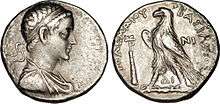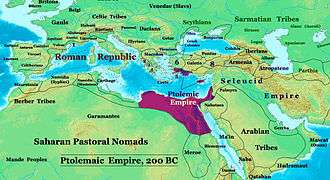Ptolemy V Epiphanes
| Ptolemy V Epiphanes | ||||||||||||||||||||||||||||||||||||||||||||||||||||||||||||||||||||||||||||||||||||||||||||||||||||||||||||||||||||||||||||||||||||||||||||||||||||||||||||||||||||||||||||||||||||||||||||||||||||||||||||||
|---|---|---|---|---|---|---|---|---|---|---|---|---|---|---|---|---|---|---|---|---|---|---|---|---|---|---|---|---|---|---|---|---|---|---|---|---|---|---|---|---|---|---|---|---|---|---|---|---|---|---|---|---|---|---|---|---|---|---|---|---|---|---|---|---|---|---|---|---|---|---|---|---|---|---|---|---|---|---|---|---|---|---|---|---|---|---|---|---|---|---|---|---|---|---|---|---|---|---|---|---|---|---|---|---|---|---|---|---|---|---|---|---|---|---|---|---|---|---|---|---|---|---|---|---|---|---|---|---|---|---|---|---|---|---|---|---|---|---|---|---|---|---|---|---|---|---|---|---|---|---|---|---|---|---|---|---|---|---|---|---|---|---|---|---|---|---|---|---|---|---|---|---|---|---|---|---|---|---|---|---|---|---|---|---|---|---|---|---|---|---|---|---|---|---|---|---|---|---|---|---|---|---|---|---|---|---|
|
Ancient Greek: Πτολεμαῖος Ἐπιφανής Ancient Egyptian: Iwaennetjerwymerwyitu Seteppah Userkare Sekhem-ankhamun[1] | ||||||||||||||||||||||||||||||||||||||||||||||||||||||||||||||||||||||||||||||||||||||||||||||||||||||||||||||||||||||||||||||||||||||||||||||||||||||||||||||||||||||||||||||||||||||||||||||||||||||||||||||
 Tetradrachm issued by Ptolemy V Epiphanes, British Museum | ||||||||||||||||||||||||||||||||||||||||||||||||||||||||||||||||||||||||||||||||||||||||||||||||||||||||||||||||||||||||||||||||||||||||||||||||||||||||||||||||||||||||||||||||||||||||||||||||||||||||||||||
| King of Egypt | ||||||||||||||||||||||||||||||||||||||||||||||||||||||||||||||||||||||||||||||||||||||||||||||||||||||||||||||||||||||||||||||||||||||||||||||||||||||||||||||||||||||||||||||||||||||||||||||||||||||||||||||
| Reign | 204–181 BC | |||||||||||||||||||||||||||||||||||||||||||||||||||||||||||||||||||||||||||||||||||||||||||||||||||||||||||||||||||||||||||||||||||||||||||||||||||||||||||||||||||||||||||||||||||||||||||||||||||||||||||||
| Predecessor | Ptolemy IV | |||||||||||||||||||||||||||||||||||||||||||||||||||||||||||||||||||||||||||||||||||||||||||||||||||||||||||||||||||||||||||||||||||||||||||||||||||||||||||||||||||||||||||||||||||||||||||||||||||||||||||||
| Successor | Ptolemy VI | |||||||||||||||||||||||||||||||||||||||||||||||||||||||||||||||||||||||||||||||||||||||||||||||||||||||||||||||||||||||||||||||||||||||||||||||||||||||||||||||||||||||||||||||||||||||||||||||||||||||||||||
| ||||||||||||||||||||||||||||||||||||||||||||||||||||||||||||||||||||||||||||||||||||||||||||||||||||||||||||||||||||||||||||||||||||||||||||||||||||||||||||||||||||||||||||||||||||||||||||||||||||||||||||||
| Ptolemy V Epiphanes | |
|---|---|
| Born | 9 October 210 BC |
| Died | 181 BC (aged 28–29) |
| Spouse | Cleopatra I |
| Issue |
Ptolemy VI Ptolemy VIII Cleopatra II |
| Dynasty | Ptolemaic |
| Father | Ptolemy IV Philopator |
| Mother | Arsinoe III of Egypt |
Ptolemy V Epiphanes[note 1] (Greek: Πτολεμαῖος Ἐπιφανής, Ptolemaĩos Epiphanḗs "Ptolemy the Illustrious"); 210–181 BC[2]), son of Ptolemy IV Philopator and Arsinoe III of Egypt, was the fifth ruler of the Ptolemaic dynasty from 204 to 181 BC. He inherited the throne at the age of five, and under a series of regents, the kingdom was paralyzed. The Rosetta Stone was produced during his reign as an adult.
Reign
Regency infighting

Ptolemy Epiphanes was only a small boy when his father, Ptolemy Philopator, died. Philopator's two leading favorites, Agathocles and Sosibius, fearing that Arsinoe would secure the regency, had her murdered before she heard of her husband's death, thereby securing the regency for themselves. However, in 202 BC, Tlepolemus, the general in charge of Pelusium, put himself at the head of a revolt. Once Epiphanes was in the hands of Tlepolemus he was persuaded to give a sign that his mother's killers should be killed. The child king gave his consent, it is thought more from fear than anything else, and Agathocles along with several of his supporters were killed by the Alexandrian mob.[3]
War with the Seleucid Empire and Macedonia
Antiochus III the Great and Philip V of Macedon made a pact to divide the Ptolemaic possessions overseas. Philip seized several islands and populated places in Caria and Thrace, whilst the Battle of Panium (198 BC) definitively transferred Coele-Syria, including Judea, from the Ptolemies to the Seleucids.
Antiochus then concluded peace, giving his own daughter Cleopatra I to Epiphanes in marriage (193–192 BC). Nevertheless, when war broke out between Antiochus and Rome, Egypt ranged itself with the latter power.
Epiphanes came of age in approximately 196 or 197 BC with a ceremony known as an anacleteria, which was described in Polybius' Histories.[4] Polybius writes that Ptolemy's courtiers "thought that the kingdom would gain a certain degree of firmness and a fresh impulse towards prosperity, if it were known that the king had assumed the independent direction of the government." [5] In manhood, Epiphanes was a passionate sportsman; he excelled in athletic exercises and the chase.
The Egyptian Revolt
Great cruelty and treachery were displayed in the suppression of the native rebellion, and some accounts represent Epiphanes as personally tyrannical. In 197 BC, Lycopolis was held by the forces of Ankhmakis (also known as Chaonnophris), the secessionist pharaoh of Upper Egypt, but he was forced to withdraw to Thebes. The war between Upper and Lower Egypt continued until 185 BC with the arrest of Ankhmakis by Ptolemaic general Conanus. This victory re-established Ptolemaic rule in Upper Egypt, as well as the Triakontaschoinos.
In 183 BC/184 BC, the rebels in Lower Egypt surrendered on the basis of terms that Epiphanes had personally promised to honor. However, showing himself treacherous and vindictive, he had them put to death in a cruel manner.[3]
The Memphis Decree, published in three languages on the Rosetta Stone and other stelae, announced the rule and ascension to godhood of Ptolemy V, and contained concessions to the priesthood, and has been termed a reward for the priests' support.[6]
Succession
| Ptolemy in hieroglyphs |
|---|
The elder of Ptolemy V's two sons, Ptolemy VI Philometor (181–145 BC), succeeded as an infant under the regency of his mother Cleopatra the Syrian. Her death was followed by a rupture between the Ptolemaic and Seleucid courts, on the old question of Coele-Syria.
Legacy
Ptolemy V's reign was also marked by trade with other contemporaneous polities. In the 1930s, excavations by Mattingly at a fortress close to Port Dunford (the likely Nikon of antiquity) in present-day southern Somalia yielded a number of Ptolemaic coins. Among these pieces were 17 copper mints from the Ptolemy III to Ptolemy V dynasties, as well as late Imperial Rome and Mamluk Sultanate coins.[7]
Notes
- ↑ Numbering the Ptolemies is a modern convention. Older sources may give a number one higher or lower. The most reliable way of determining which Ptolemy is being referred to in any given case is by epithet (e.g. "Philopator").
References
- ↑ Clayton (2006) p. 208.
- ↑ "Ptolemy V Epiphanes". Livius.org.
- 1 2 Bevan, Chapter 8.
- ↑ Walbank, Frank W. (2010-08-26). Selected Papers: Studies in Greek and Roman History and Historiography. Cambridge University Press. ISBN 9780521136808.
- ↑ "Polybius, Histories, book 18, Anacleteria of Ptolemy Epiphanes". www.perseus.tufts.edu. Retrieved 2017-02-05.
- ↑ British Museum. "History of the World in 100 Objects:Rosetta Stone". BBC.
- ↑ Hildegard Temporini (ed.) (1978). Politische Geschichte: (Provinzien und Randvölker: Mesopotamien, Armenien, Iran, Südarabien, Rom und der Ferne Osten)], Part 2, Volume 9. Walter de Gruyter. p. 977. ISBN 3110071754. Retrieved 1 November 2014.
Bibliography
- Bevan, Edwyn Robert (1927). A History of Egypt Under the Ptolemaic Dynasty. Methuen. OCLC 876137911.
- Clayton, Peter A. (2006). Chronicles of the Pharaohs: The Reign-by-Reign Record of the Rulers and Dynasties of Ancient Egypt. Thames & Hudson. ISBN 0-500-28628-0.
External links
- Ptolemy V Epiphanes entry in historical sourcebook by Mahlon H. Smith
Ptolemy V Epiphanes Born: 209 BC Died: 181 BC | ||
| Preceded by Ptolemy IV Philopator |
Ptolemaic dynasty 204 BC–181 BC with Cleopatra I |
Succeeded by Ptolemy VI Philometor |
